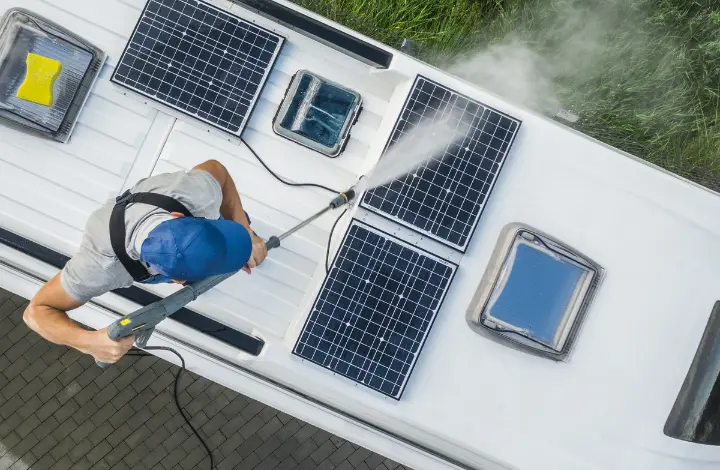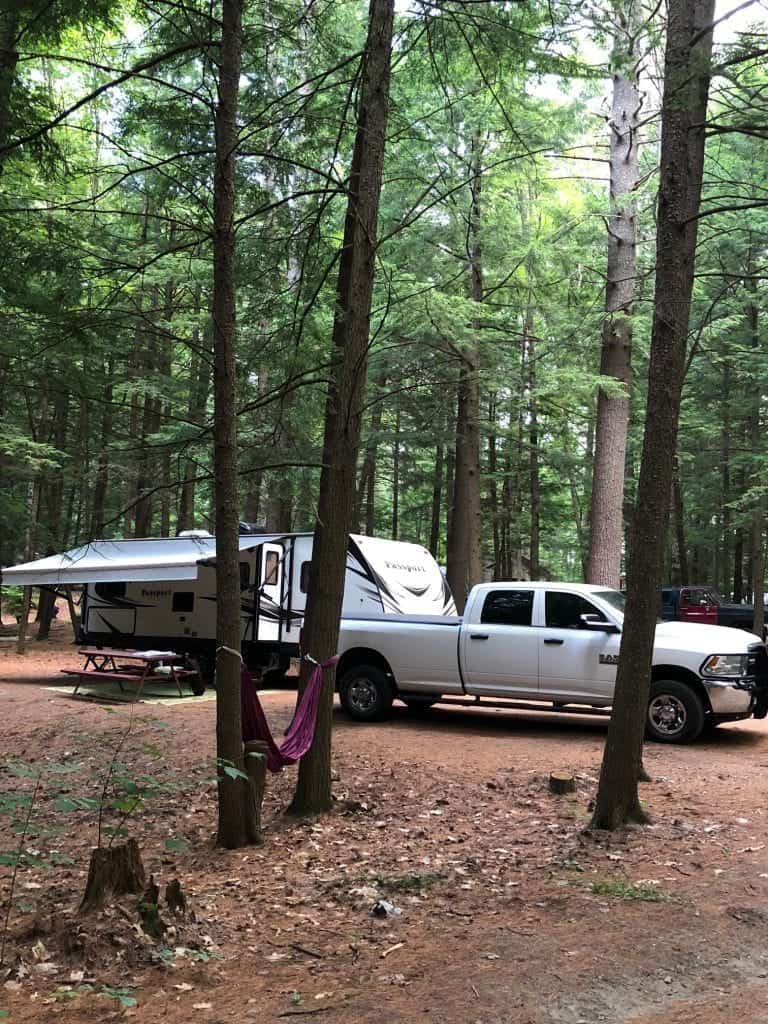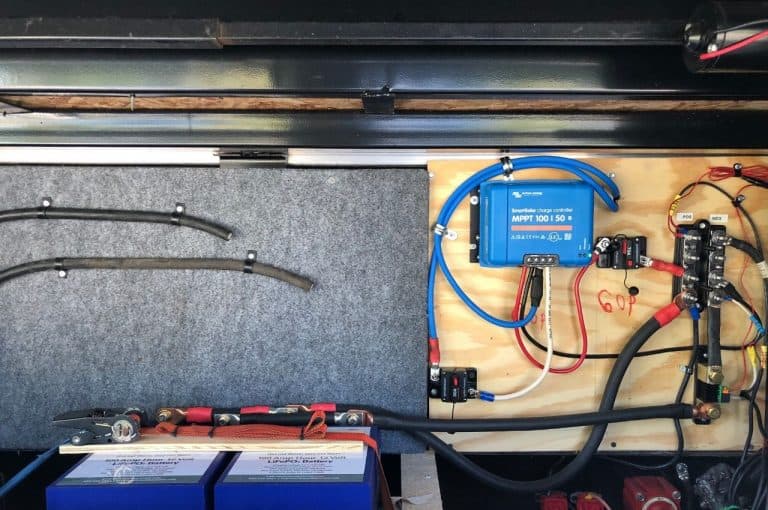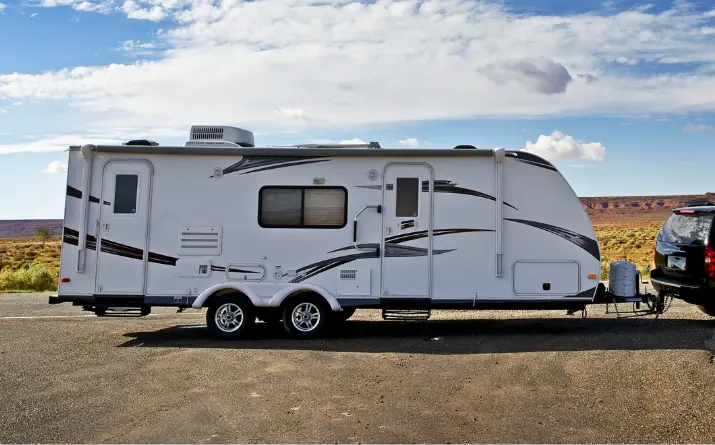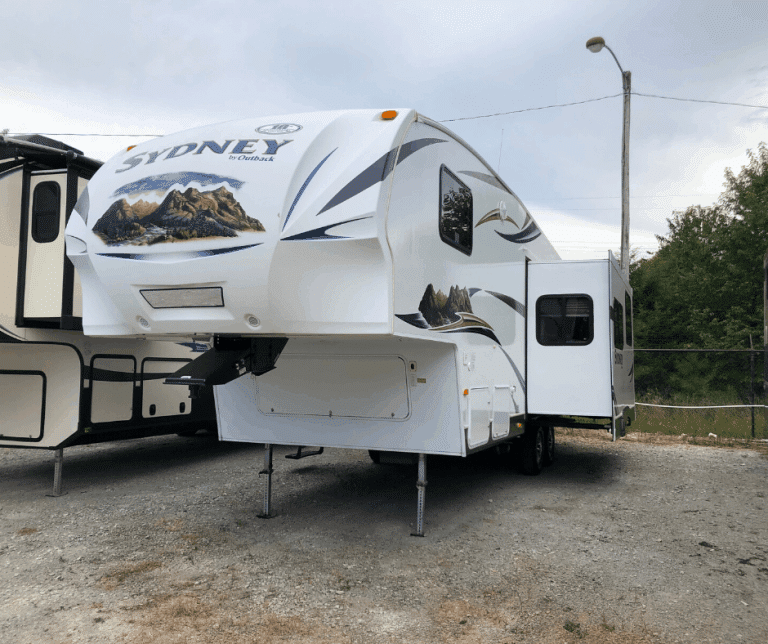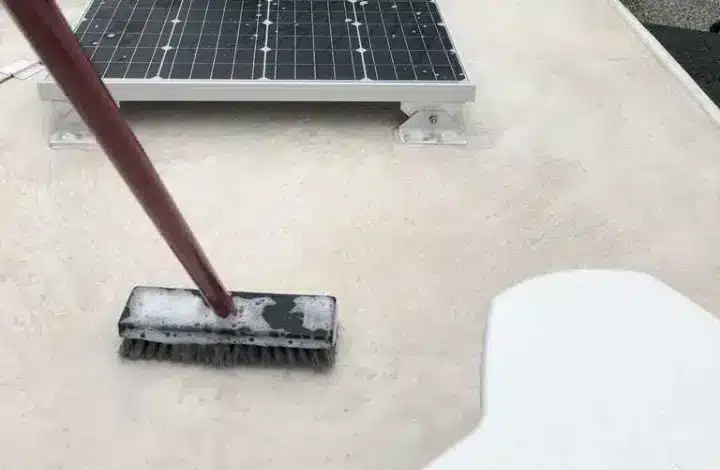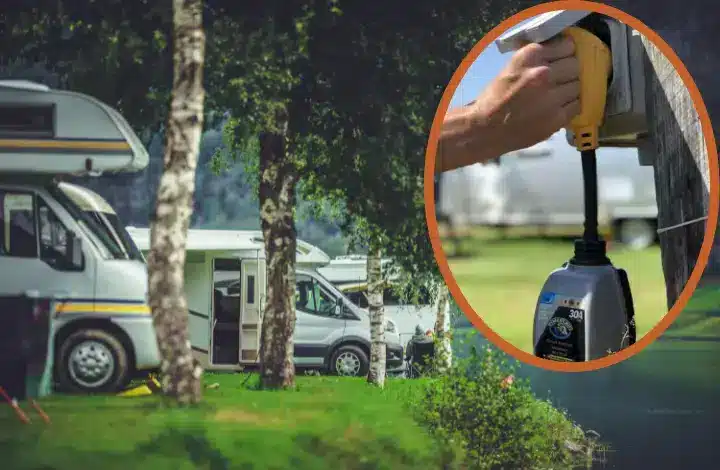RV Maintenance Checklist for Safe, Worry-Free Travel
We know why you’re an RVer. For the priceless freedom, morning hikes, and breathtaking views. More than 65+ million Americans agree with your preferred method of travel and adventure. And we must all understand the importance of following an RV maintenance checklist to enjoy safe, worry-free travel.
When you explore the national parks, monuments and tranquil coastline by motorhome, campervan, or trailer, you can stay overnight in the beautiful places that casual day-trippers only dream about.
As a bonus, all your stuff travels with you. You have a kitchen, private bathroom, and the great outdoors. It doesn’t get much better than that. But there is a downside. Equipment malfunctions and breakdowns can and will happen.
Full-time RVers need to be ready for the unexpected. I suggest taking a proactive approach to try preventing potential problems and costly repairs. Follow a routine maintenance schedule to keep your rig in tip-top shape.
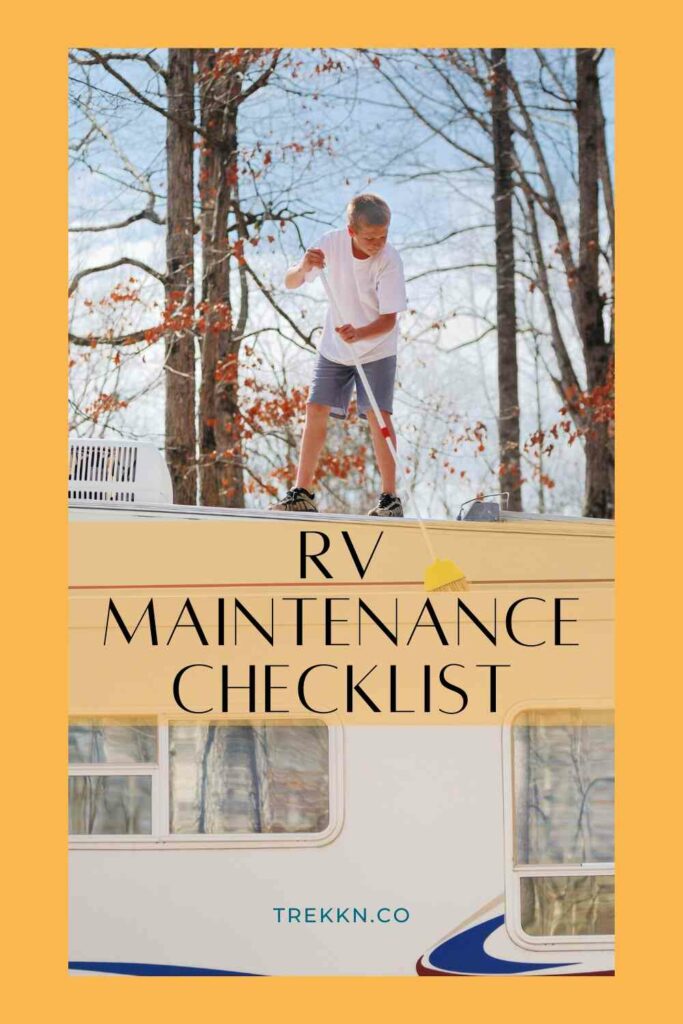
Importance of RV Maintenance: Personal Experience
On one memorable day, I arrived at camp only to find that my kitchen sink had dropped out of the counter during travel. It crashed down onto the drawers underneath, creating a leak in the process.
I have also opened my door after a drive to see my microwave hanging precariously from its bracket, ready to fall.
One-off repair stories aside, regular RV maintenance can help prevent a repair from derailing your next adventure.
In this article, we’ll break down every must-do item for weekly, monthly, and seasonal maintenance of your home on wheels.
Essential Guide to RV Maintenance
First Step: Read Your RV Owner’s Manual
If the phrase “check your owner’s manual” makes you roll your eyes, you’re not alone. I have a habit of doing things first and reading the manual second, only to find that I’ve done something wrong and have to start over.
Save yourself the headache (and the inevitable swearing), and read your owner’s manual.
Always read the Operation, Warranty, and Maintenance sections of your RV Owner’s manual.
That’s the best place to get guidance directly from your rig manufacturer. The company that built the rig offers the best detailed information regarding proper operation of that RV. You want to make sure you understand what to do and when to do it. And you definitely want that know-how before hitting the open road.
Every RV, trailer, and campervan will have its own manufacturer-specific components and specs, so it’s best to start with the manufacturer’s instructions first.
Weekly RV Maintenance
Keep Your RV Clean
The good news is, there aren’t that many tasks that need to be done every week. Just do your best to keep your RV relatively clean and in good working order.
Before each trip, do a quick visual inspection of your wheels and axles to make sure everything looks good. It’s a simple task to add to the walk-around you’re already doing before you hit the road (right?!).
Check The Tires
Another must-do before traveling is to check your tire pressure and look for signs of wear and tear.
Overinflated tires can cause a blowout as well as other damage to your RV. But, don’t operate under the assumption that low pressure will help you avoid a tire blowout.
In fact, most blowouts actually happen due to underinflated tires, often caused by a slow leak. RV tires with low pressure are susceptible to flex and bend while on the road. The heavy weight of an RV puts a stress on the tires that can lead to a blowout. Always check your tire pressure before you travel.
Check tire pressure, inspect for cracks, and apply a UV protection spray.
If it’s within your budget, invest in a Tire Pressure Monitoring System (TPMS), which will alert you if your tire pressure or temperature ventures out of range.
For those of you who haven’t heard about a TPMS, please read our popular article RV Tire Pressure Monitoring System: 5 Reasons to Purchase One and Protect Your Investment. We think it will help you understand why a TPMS is an absolute must-have for RV owners.
Weekly RV Maintenance Checklist
If you’re a checklist person, weekly maintenance might look something like this:
- Clean the roof and slide outs by sweeping them off with a small broom to keep them free of debris
- Check your tire pressure
- Visually inspect the hitch, tires, axles, and any other towing/driving components
Monthly RV Maintenance
Check The Battery
Inspect the condition of your RV battery. Look for signs of corrosion and ensure that the connections are tight.
If your RV or campervan uses a deep cycle battery, check the water level every month and top up with distilled water as needed.
If you have lithium, you’re off the hook—regular monthly maintenance is not required! (Again, read your owner’s manual to confirm this is true for your rig.)
Inspect Safety Equipment
Your fire alarm and extinguisher will be no help if they’re out of service when you need them. So verify that all of your safety equipment is still within the expiration date listed by the manufacturer.
I remember a few years ago seeing a fire extinguisher mounted on the basement wall of a house I had just purchased. I checked the expiration date and laughed when I saw it had expired three years earlier! Thank goodness the prior home owners never needed to use it.
So don’t let these things sit idle. Check your fire extinguisher, smoke detector, carbon monoxide detector, and propane detector.
Replace the batteries if necessary, then press the test button to ensure that all those delightful piercing sounds are working.
Also, check your propane tanks every once in a while to make sure they aren’t due for inspection.
For some additional light reading, check out TREKKN’s overview on propane safety. The article includes specific detail about what you need to know and recommended items to have on hand such as a leak detector alarm.
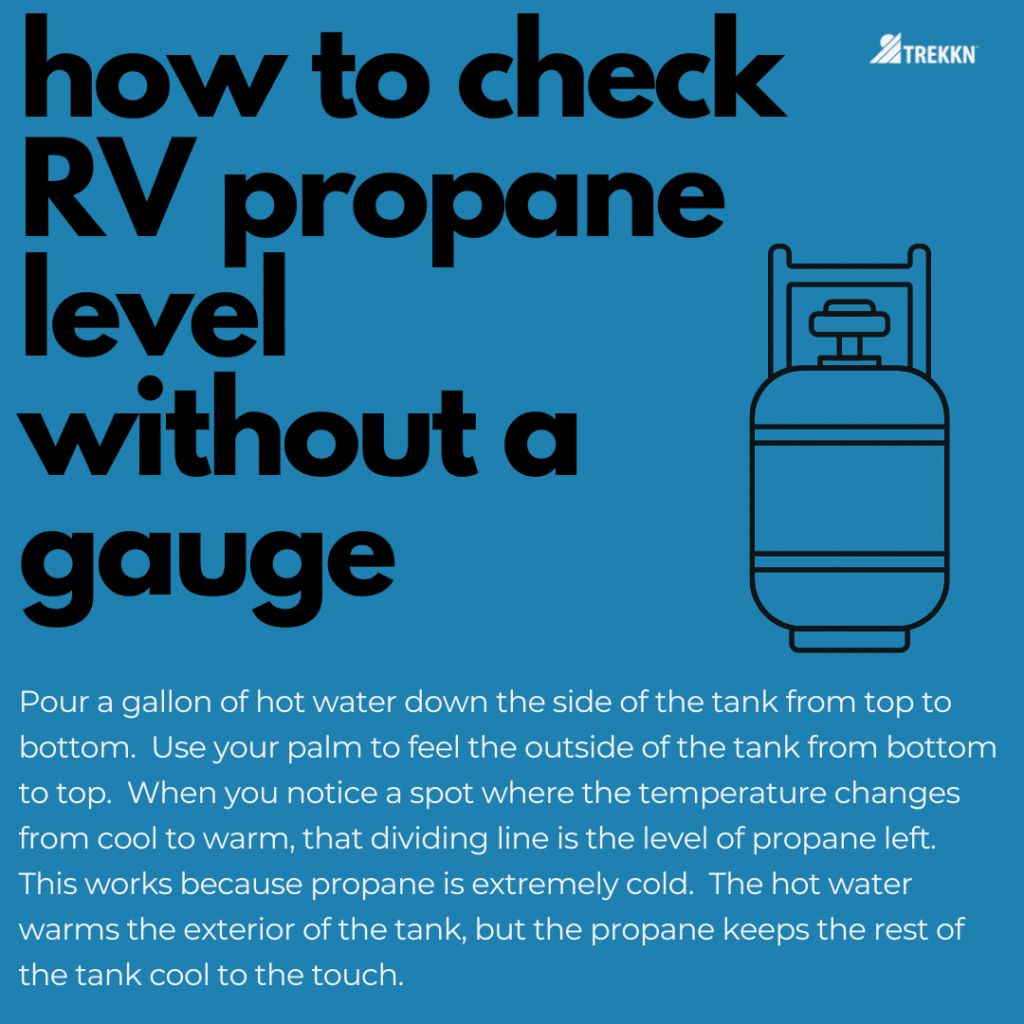
Inspect Tires and Axles (Again)
Inspecting the tires is an important step in your preventative maintenance checks. So, let’s make sure you check those tires and axles again. However, it doesn’t have to be a big production. Do a basic visual check to look for any signs of damage. Make sure that everything looks the way it should.
Tires collect gunk from the road, including oil, mud, construction tar and other debris. Brush it all off and inspect each tire for any damage. While you’re at it, spray on a UV shield such as 303 Protectant to protect against cracking and to help repel the grime.
Apply a UV Protectant Shield on Tires
Protect RV tires from fading or cracking, and help prevent dry rot. Apply to clean surface. Non-greasy finish when dried.
RV tires tend to have a lifespan of about three years under heavy use. I recommend you check the manufacture date on your tires and check the tread to see if you’re due for replacement.
Of course, before hitting the road, check the air pressure.
Exercise the Generator
If you have a generator, run it once a month or so to keep the engine in good working order.
Run your generator at 50% capacity for 1-2 hours every month to keep it healthy, and check the maintenance schedule to make sure you’re changing the oil and air filter at the required intervals.
Look Over and Under
Climb onto the roof (carefully!) and clear debris from the gutters. While you’re up there, check the caulking and seals for any cracks or peeling, and make sure your air conditioner coils look clean.
Clean and then use a protectant to treat the rubber seals and your slide outs to keep the rubber flexible and to prevent cracking.
Treat and Protect the Rubber Seals
Protect and condition seals on doors, windows, and hoods.
Lube the Slides
Under the slides, clean and lubricate the slide-out rails.
Related Reading: RV Roof Maintenance: The Good, the Bad, and the Sticky
Pop the Hood
For motorhomes or tow vehicles, look under the hood to ensure hoses and clamps are secure and fluid levels are in a healthy range.
Look for any major leaks or apparent issues; you’ll want to know about these well in advance of any travel days.
Seasonal and Annual Maintenance
Exterior and Interior Cleaning
This is a bit different than the normal cleaning you would do around your home—although you should do that stuff, too. In an RV, regular cleaning prevents the build-up of grime and mold.
Keeping the exterior clean can extend the life of your decals and tends to make RV parks happier to see you when you roll in.
Use an RV-friendly cleaning solution to prevent damage to the exterior finish.
Wash and wax in one solution. Biodegradable solution will not cause streaking or water spotting.
Inside, clean your fridge and vacuum under your slide outs. You want to pick up any debris that might scratch your floor. Also check and clean dome lights for unsightly dead bugs.
Sanitize the Water System
Your water system only needs to be sanitized twice yearly if you’re using the plumbing full time. Weekend warriors should do it every season, depending on how much use your water system gets.
The longer water sits in your lines, especially in warm weather, the more time harmful bacteria have to grow in there.
While you’re at it, drain and flush your water heater, running your chlorine solution through the water heater (make sure it’s turned off and cooled down first) and through the water pump.
Finally, this is a great time to use your water pump as a sort of “leak test.” If everything is working normally, your water pump should kick on for a minute or two to initially pressurize the system and then run when you turn on a tap.
If the pump runs too often outside those times, it’s a good indicator that you have a leak somewhere in your plumbing system.
Related Reading: How to Secure Your RV to Help Prevent Theft
Sealant and RV Roof Inspection
Look for cracks or breaks in the sealants around windows, roof vents, and joints. Apply more sealant as needed to create a secure seal along the roof edge and around air vents to prevent leaks.
Also check screw heads and apply sealant, if needed.
Brake Check
On a motorized RV, brakes are crucial for your safety. Have them inspected by a professional every quarter to ensure they are functioning correctly.
Trailer brakes can be checked every time you get the wheel bearings packed (roughly every 10,000-12,000 miles).
Lubricate Moving Parts
All moving parts, such as door hinges, slide-out rails, and jacks, need lubrication to function smoothly. While you’re doing regular maintenance on the moving parts, check the rubber seals on your RV windows, compartments, and hatches.
All of these areas gather a lot of dust, leaf particles, and other debris.
You want to ensure that you keep it as clean as possible, then protect and condition the material to reduce friction, cracking, and fading.
Use a high-quality lubricant designed for the specific part and material you’re lubricating. RVCare makes a silicone lube specifically for slide-outs and a spray-on rubber conditioner to protect and extend the life of your RV’s other rubber seals.
Check Emergency Exits
Some RV windows tend to stick, especially if they aren’t used often.
Make sure you know which window is your emergency exit (it will be marked with a red handle). Test it to make sure it opens and closes smoothly.
It’s also a good idea to create an emergency exit plan and review the plan often enough that everyone in your party knows what to do and where to meet should there be a need.
Check Major Appliances
Verify all appliances are working correctly, including the refrigerator, air conditioning, heating system, oven, and microwave.
Change the Oil
Just like your car, motorized RVs need a regular oil change. Many motorized RVs are parked for much of the year. If that’s the case with your RV, it’s best to schedule oil changes based on the date rather than the mileage.
Put together a schedule to ensure your RV oil is changed on a regular basis, regardless of whether or not you have an upcoming road trip. Change the oil at least once a year to prevent undue wear and tear on the engine. Get the air, fuel, coolant, and hydraulic filters inspected while you’re at it, replacing them when they get too dirty to use.
Weigh In
To keep your RV weight within its limitations and ensure your cargo is balanced safely, visit a weigh station every six months or so to ensure that your RV is under its stated GVWR.
Clean and Inspect the Awning
If your awning is wet or damp, bring it out and let it dry. You might also clean it with RV wash and let it fully dry.
This helps keep it smelling nice and free of mildew, mold, and pests that might build tiny nests inside.
Awnings can cost thousands of dollars to replace, so it’s well worth taking the time to keep your RV awning in good shape.
Related Reading: How to Maintain Your RV Awning
Clean and Inspect Components of Appliances
Check the exterior and interior components of your refrigerator, air conditioner, and hot water heater. Keep them clean and free of dust, cobwebs, and other debris.
Related Reading: Top Tips for How to Winterize Your RV
TREKKN is ready-supported. We may earn a small commission for qualifying purchases, at no additional cost to you. Please read our disclosure for more information.
Top 12 Items to Keep in Your RV Toolkit
You don’t need to carry hundreds of pounds of gear to be prepared for the most common fixes.
Here are the top 12 maintenance tools you should carry on the road:
Keep a Written Record
It can be hard to remember exactly which maintenance tasks you’ve completed and when, so keep a record somewhere that’s easy to access.
This will be a big benefit to you as well as anyone who purchases your RV if you decide to sell it down the line.
You can take a low-tech approach and use a notebook, or go the high-tech route and use a dedicated software tool like Maintain My RV.
I keep all of my printed receipts in a dedicated file folder that I can hand off to anyone who needs a maintenance history. Receipts can also come in handy if you need to find the contact number for a vendor or supplier.
Safety First
Regular maintenance of your RV, campervan, or trailer can save you money and headaches over the long run, not to mention potential safety issues.
The first time you do some of these checks, they may feel like a lot. But, once you’re comfortable with the process, they’ll become quick and easy to complete.
Make no mistake — you’ll still run into unexpected repairs on the road. It’s all part of the adventure!
That said, putting some time and energy into preventative RV maintenance will prolong the life of your rig. By doing your regular maintenance repairs and checks, you will be a step ahead. Having a well-maintained RV helps to ensure your travels are safe and worry-free.
Here’s to endless memorable (and issue-free) adventures on the road!
Quick Checklist for RV Tool Kit
1. TIRE PRESSURE MONITOR SYSTEM
Monitor up to 20 tires with PSI accuracy from 0-199 PSI. Displays status of multiple tires simultaneously.
Related Reading: Protect Your RV Investment with a TPMS
2. SPRAY-ON LUBRICANT
Low-odor with enhanced Teflon resists washing, melting, and extreme temperatures. Great for RV, boats, home and auto. Use on gears, bearings, chains, cables, and more.
3. PORTABLE DRILL
- Battery powered with average battery life of 1 hour
- Variable speeds
- Built-in bit holder
- 20 Volts
4. PLUMBER TAPE
Durable tape that creates a tight seal on thread connections to help prevent water leaks within plumbing system.
5. SCREWDRIVER SET
Interchangeable blade for easy switching between bits. Storage area inside handle houses all extra screwdriver bits. Supplements a drill for use in tighter spaces and to ensure screws are not over-tightened by drill.
6. ROAD HAZARD EMERGENCY KIT
90-piece kit includes tire repair, tow rope, window glass breaker, portable air compressor, jumper cables, work gloves, and other roadside tools.
7. PORTABLE AIR COMPRESSOR
8. HEAVY DUTY TAPE
All weather, waterproof duct tape designed to handle outdoor repairs. Strong butyl adhesive. Resists drying, cracking, and peeling in hot, cold, and moist conditions.
9. ASSORTED SET of VEHICLE FUSES
Wide variety of uses for SUVs, Camper RV, Golf Car, Snowmobiles, and other vehicles. Color-coded fuses simplifies installation process. Confirm fuse set includes the dimensions and volts you need for your rig before purchase.
10. RATCHET SET
11. UTILITY KNIFE
Ultra sharp knife set includes one retractable blade and one folding blade.
12. FLASHLIGHT
Handheld flashlight useful for emergencies, roadside repairs, at the campsite, and on hikes. Battery powered with rechargeable high lumen LED lights.

Sarah Kuiken has been a full-time solo traveler for 4 years and counting, but she’s been a solo adventurer for decades. She owns her own copywriting business, Flourish Writing, which she operates from the road. Sarah loves to explore state and national parks with her two dogs, Orion and Piper—wherever they’re allowed, of course. When she’s not whipping up web copy for fellow entrepreneurs, she’s probably out hiking or paddle boarding with the dogs in tow. Learn more about her freelance writing business at FlourishWriting.com.


